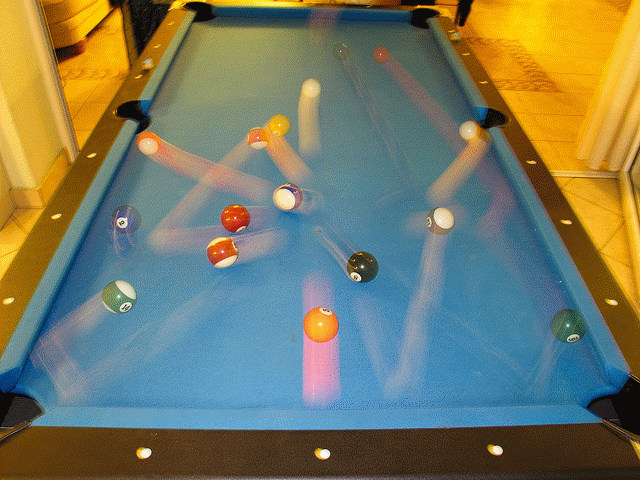 Impulse on Billiard Balls:
Billiard balls collide with each other and with the sides of the table. They slow down, speed up and
change directions. The force acting over time is known as an impulse. The change in momentum of the balls is equal to the Impulse.
Impulse on Billiard Balls:
Billiard balls collide with each other and with the sides of the table. They slow down, speed up and
change directions. The force acting over time is known as an impulse. The change in momentum of the balls is equal to the Impulse.
Impulse is defined as a force multiplied by the amount of time it acts over. In calculus terms, the impulse can be calculated as the integral of force with respect to time.
Alternately, impulse can be calculated as the difference in momentum between two given instances. The SI units of impulse are N×s or kg×m/s.
If you catch a high–speed cricket ball while your hands move toward the ball instead of away upon contact; or jumping from an elevated position onto the floor instead of a cushioned bed; or while boxing, if you move into a punch instead of away–you're really in trouble. In these cases of short impact times, the impact forces are large. Remember that for an object brought to rest, the impulse is the same, no matter how it is stopped. But if the time is short, the force will be large.
The idea of short time of contact explains how a karate expert can break a stack of concrete slabs with one blow. The great momentum imparted by the expert against concrete slabs is quickly reduced while the expert delivers an impulse to the slabs.
Impulse is the force of the expert's hand against the slabs multiplied by the time the hand makes contact with them. By swift execution the time of contact is very brief and correspondingly makes the force of impact huge. If the hand is made to bounce upon impact, the force is even greater.